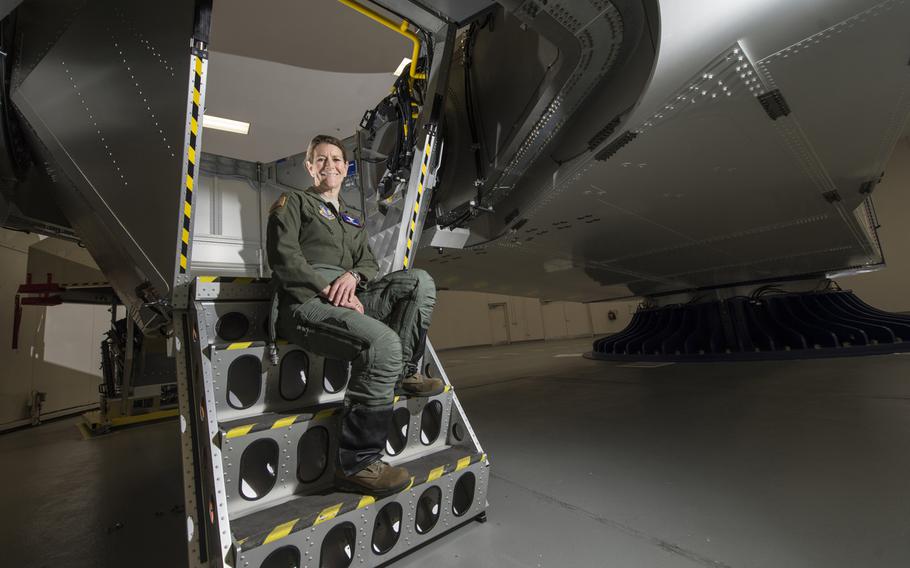
Col. Kathryn Hughes, a pilot-physician and director, Human Systems Integration, 711th Human Performance Wing, sits on the stairs of a centrifuge at Wright-Patterson Air Force Base, Ohio, April 22, 2016. Hughes, an A-10 Thunderbolt II pilot, was instrumental in the integration of the full-coverage G-suit into the Air Force inventory. (Brian Ferguson/U.S. Air Force)
The Defense Department’s only human-rated centrifuge is set in October to begin training about 1,200 students each year at Wright-Patterson Air Force Base, Ohio.
The $34.4 million centrifuge became fully operational earlier this month after more than five years of delays, according to the Dayton Daily News. It takes the place of the Air Force’s former centrifuge at Holloman Air Force Base, N.M., which closed in 2011.
In the interim, pilots and flight crews have been training in a centrifuge operated by contractors at Brooks Air Force Base, Texas.
“A device such as this is needed now more than ever,” Brig. Gen. Mark Koeniger, 711th Human Performance Wing, said in a statement. “With the extreme performance that is possible in our aircraft today, it is paramount that we provide the best training possible for these aircrew members. This centrifuge will do just that.”
Human-rated centrifuges are used for training aviators to withstand the effects of high levels of acceleration. They are also used in medical research, equipment testing and evaluation, and studies investigating adaptation to weightlessness.
The new machine, which mimics the force of nine times normal gravity, goes into full service in October.
“I’ll just say that centrifuge training is a necessary evil,” Col. Alden Hilton, U.S. Air Force School of Aerospace Medicine commander, said during a ceremony marking the new centrifuge’s start of operations.
howard.william@stripes.com Twitter @Howard_Stripes